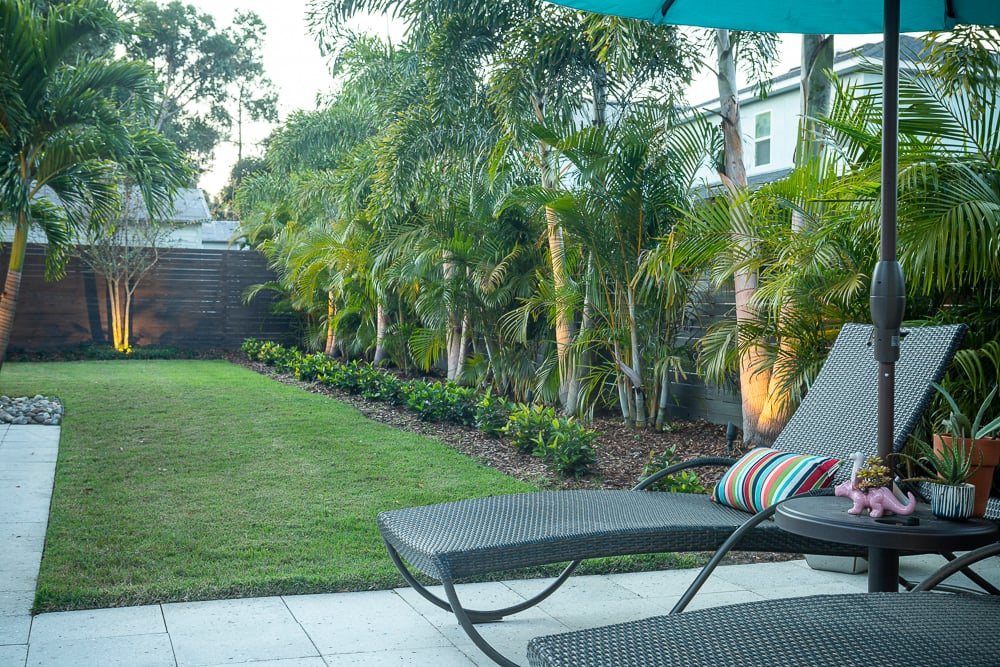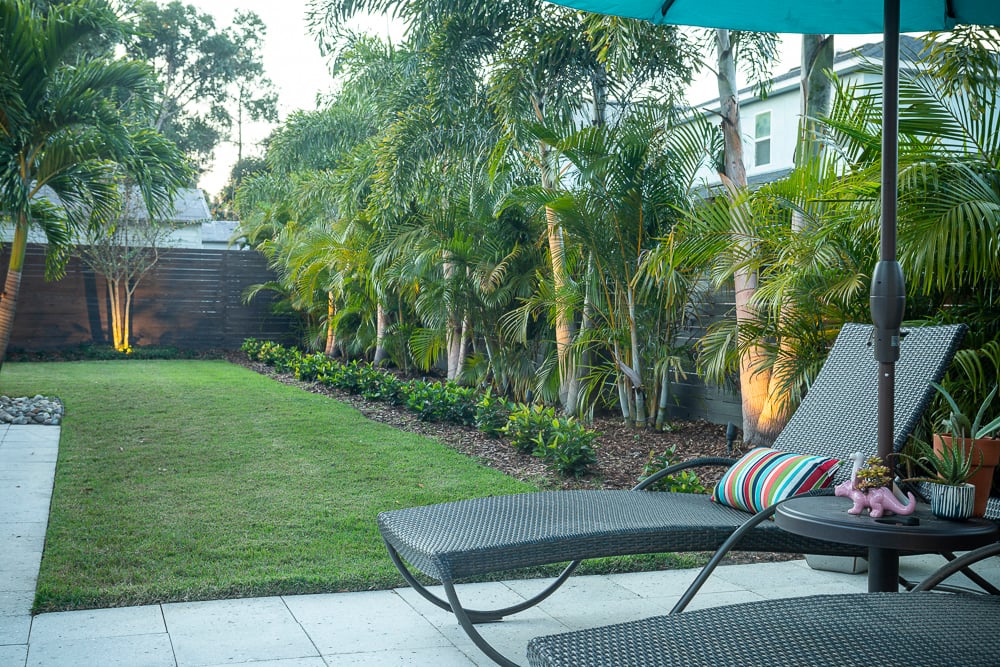Looking to enhance the appearance of your fence and make the most out of your outdoor space? In this article, we will guide you through 74 tips for landscaping around your fence. Whether you have a wooden fence, chain-link fence, vinyl fence, or metal fence, we’ve got you covered. We will explore various landscaping ideas and techniques to transform your fence from a functional structure to a stunning focal point. From selecting the right plants and flowers to incorporating decorative elements and creating privacy screens, our tips will help you create a beautiful and harmonious atmosphere in your backyard. Get ready to take your fence to the next level with these landscaping tips!
Tips for Landscaping Around Your Fence
Landscaping around your fence can enhance the overall look of your property and provide additional privacy and visual appeal. It’s important to choose the right plants, consider the fence material and style, create visual interest with layers, provide privacy with tall plants, add color with flowering plants, add texture with shrubs or hedges, create a border with groundcover plants, prevent weed growth with mulch, and follow proper maintenance tips. Additionally, considering lighting and other accessories can further elevate your landscaping design. Let’s explore each of these tips in detail.
Choose the Right Plants
When landscaping around your fence, choosing the right plants is crucial. You want to select plants that will complement your fence and thrive in your local climate. Research local plant options to ensure you choose plants that are suitable for your region. Consider the sun and shade needs of your plants as well, as some may require full sun while others prefer partial or full shade. Additionally, choose plants with the right growth habits that won’t overwhelm your fence or yard. Lastly, consider the mature size of the plants to ensure they won’t outgrow the space around your fence.
Consider the Fence Material and Style
The material and style of your fence should be taken into consideration when landscaping around it. Matching the landscape to the fence style can create a cohesive and harmonious look. For example, if you have a rustic wooden fence, you can choose plants and elements that complement the natural and organic aesthetic. It’s also important to consider the durability of the fence material. Some plants or landscaping features may cause damage to certain materials, so it’s essential to choose plants and elements that won’t harm your fence. Lastly, ensure proper drainage around your fence to avoid water damage and rot.

Create Visual Interest with Layers
To create a visually appealing landscaping design around your fence, consider planting in multiple layers. This can be achieved by using plants of varying heights and textures. By adding taller plants in the back, you can create depth and dimension. You can also create a focal point with a tree or ornamental grass, which adds visual interest and draws the eye. Experiment with different plant combinations and layering techniques to create a dynamic and engaging landscape design.
Providing Privacy with Tall Plants
If privacy is a top priority for your fence, consider planting tall shrubs or trees around it. These plants can serve as natural barriers and create a sense of seclusion. Evergreen plants are a popular choice as they provide year-round privacy with their dense foliage. Planting these privacy plants in clusters can enhance their effectiveness, as they can create a thick and impenetrable barrier. Choose plants that are suitable for your climate and provide the desired level of privacy.
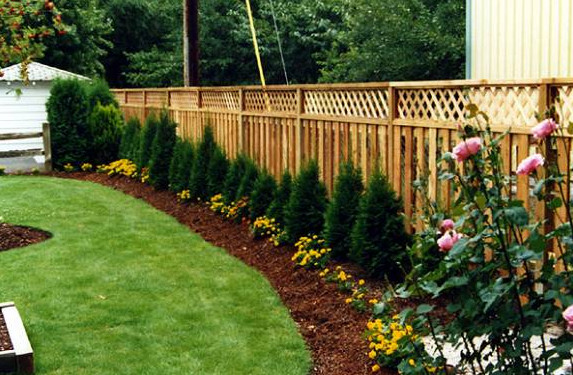
Adding Color with Flowering Plants
To add pops of color and vibrancy to your landscaping design, incorporate flowering plants. Choose plants with vibrant flowers that complement the overall color scheme of your property. Consider the blooming seasons of these plants to ensure year-round color. By combining different flowering plants with varying blooming periods, you can enjoy a continuous display of colors throughout the seasons. Experiment with different color combinations and plant arrangements to create a visually stunning landscape.
Adding Texture with Shrubs or Hedges
To introduce texture and visual interest to your fence landscaping, consider adding shrubs or hedges. Choose plants with interesting foliage that can provide unique textures to your outdoor space. Consider the growth habits and maintenance needs of these plants to ensure they can be properly cared for. Trimming and shaping these shrubs or hedges can further enhance the desired texture and create a polished and manicured look. Experiment with different shapes and sizes to find the perfect balance for your fence landscaping.
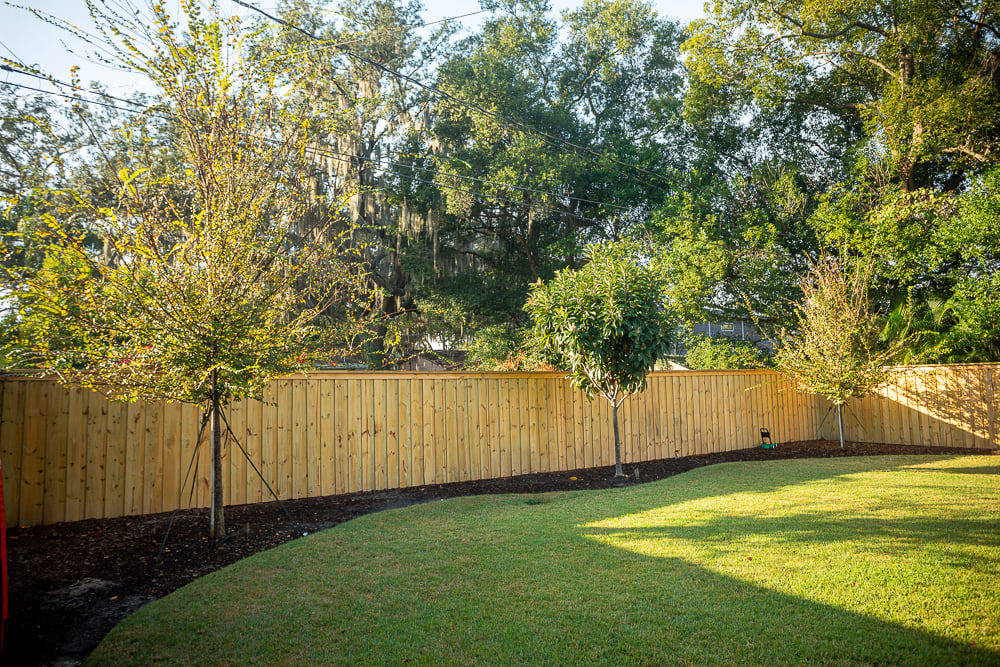
Creating a Border with Groundcover Plants
Groundcover plants are a great way to create a border around your fence and add a touch of greenery to the ground. Select low-growing plants that can spread and cover the soil, creating a uniform border. Drought-tolerant options are ideal for easy maintenance, as they require less water and care. By carefully selecting and arranging groundcover plants, you can create a neat and tidy look while preventing weed growth and erosion.
Preventing Weed Growth with Mulch
Mulch is a valuable tool for preventing weed growth around your fence. Apply mulch to the base of plants, creating a barrier that inhibits weed growth. Additionally, use weed barrier cloth before mulching to provide an extra layer of protection. This cloth prevents weed seeds from germinating and penetrating through the mulch. Consider organic mulch options, such as wood chips or shredded bark, as they can provide added benefits like moisture retention and improved soil health.
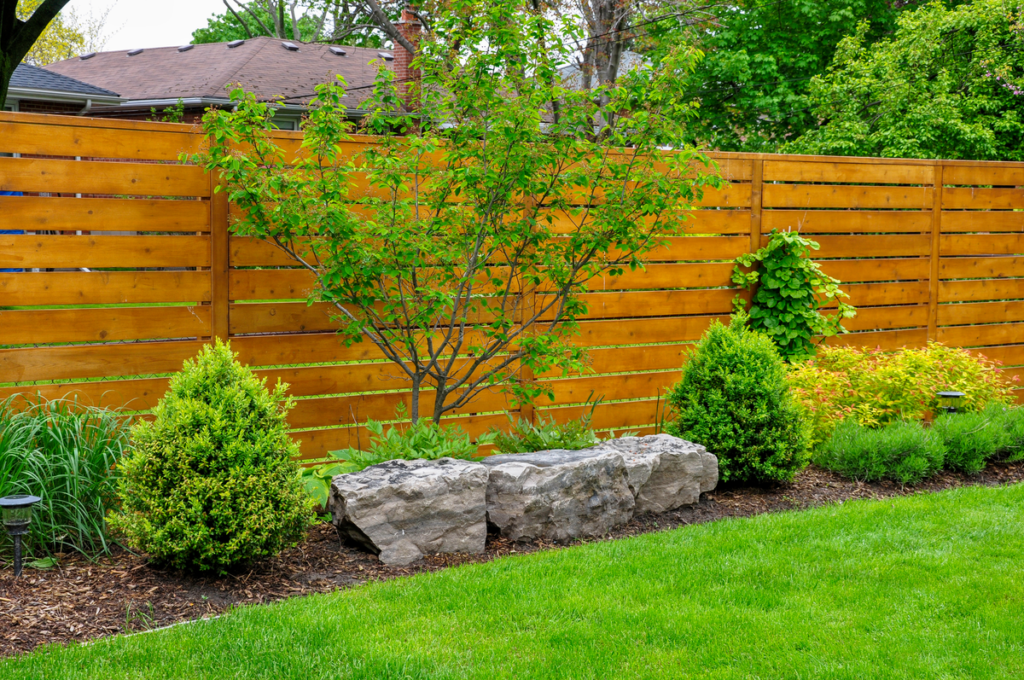
Maintenance Tips for Landscaping Around Your Fence
To keep your fence landscaping looking its best, regular maintenance is key. Ensure that your plants receive adequate water and fertilizer to promote healthy growth. Prune and trim plants as needed to maintain their shape and size. Remove weeds and dead plants promptly to prevent them from overshadowing neighboring plants or creating an untidy appearance. Monitor and control pests that may damage your plants or hinder their growth. By staying on top of maintenance tasks, you can enjoy a beautiful and well-maintained landscape.
Consider Lighting and Other Accessories
In addition to plants, consider incorporating lighting and other accessories to enhance the overall look and functionality of your fence landscaping. Outdoor lighting can highlight the fence and plants, creating a stunning nighttime display. You can also add decorative elements such as pots or sculptures to add interest and personality to your landscape design. Functional accessories like trellises or planters can serve as both decorative and practical additions. Carefully choose and place these accessories to complement your fence and plants, enhancing the overall aesthetic appeal.
10 Common Questions About Fences:
- What is the best type of fence for privacy?
- How high should a fence be for privacy?
- What are the advantages of a vinyl fence?
- How often should wooden fences be painted or stained?
- Can chain-link fences be used for security?
- How do I choose the right size and shape for my fence?
- What are the maintenance requirements for metal fences?
- Are there any natural ways to deter pests from my fence?
- What are the benefits of using trellises in fence landscaping?
- How do I choose the right plants for my fence landscaping?
In Table Format:
| Fence Type | Materials Used |
|---|---|
| Wooden Fence | Wood |
| Chain-Link Fence | Metal |
| Vinyl Fence | PVC (Polyvinyl chloride) |
| Metal Fence | Steel, Aluminum |
| Privacy Fence | Wood, Vinyl, Metal |
